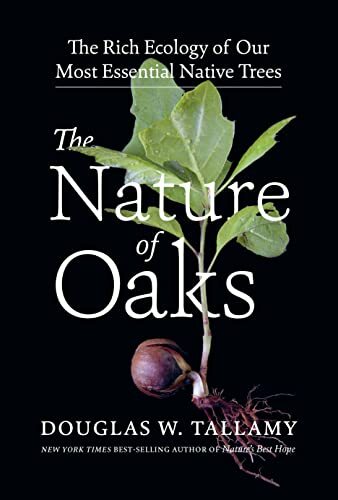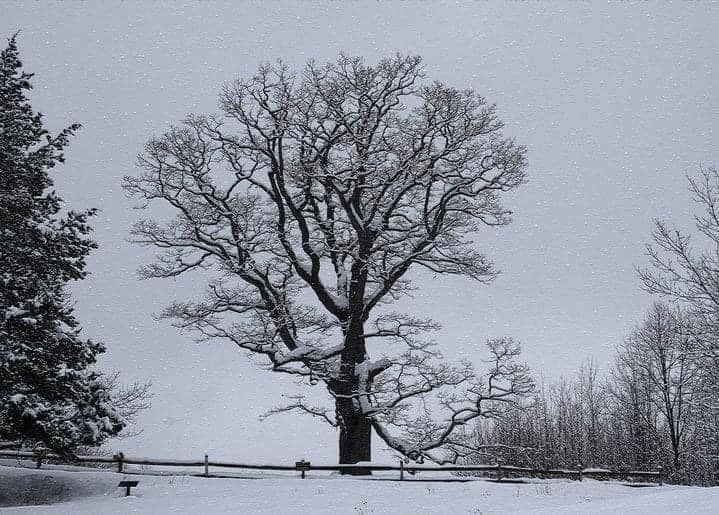
Doug Tallamy’s “The Nature of Oaks: The Rich Ecology of Our Most Essential Native Trees” encourages the average homeowner to recognize the many benefits of oaks. The book provides extensive information, both scientific and anecdotal, on the advantages oak trees bring to our landscape, our planet, and, perhaps most importantly, our biodiversity. Oaks may be the singularly most important genus when it comes to providing food and habitat for creatures of all sizes, from the quarter-inch gall wasp all the way up to the white tail deer. “There is much going on in your yard that would not be going on if you didn’t have one or more oak trees,” Tallamy writes.

Many people are familiar with the way that oaks provide nutrition to passing foragers: acorns. These delectable little morsels are a potent combination of protein, carbohydrates, and fats, while also providing notable quantities of calcium, phosphorus, potassium, and niacin. Fall is not complete without the crunch of acorns underfoot, and many of our resident bird and mammal species rely on them. They are a critical component of the diets of turkey, squirrel, chipmunk, rabbit, black bear, and whitetail deer. Oaks also provide food in less obvious ways, especially to insects and birds. A vast majority of our migratory and resident birds are not granivores, meaning they cannot subsist on grains alone. This is especially true when it comes to chick rearing: baby birds require substantially more calories and fats than grains alone can provide. Oaks are a host plant to over fifty percent of caterpillar species (942 to be exact!) and are the top biodiversity support tree in eighty-four percent of counties in North America.
Providing food isn’t the only superpower oaks have: they are also champions of enhancing soil stability and moisture. A seedling oak tree has 10 times more root mass than leaves and shoots. With a taproot which penetrates deep into the soil, oaks provide both soil structure and moisture retention. Soil stabilization is furthered enhanced by oaks’ very durable leaves. The deep layer of fallen leaves helps disperse rain water with less soil erosion, filtering it on the way through. This dense litter is also host to numerous beneficial insects which overwinter there.
Oaks have also developed an interesting relationship with a local boisterous bird species, the blue jay. Oaks and jays are thought to have co-evolved some 60 million years ago in what is now Southeast Asia. Jays bury acorns as a winter food supply, sometimes as far as a mile from the mother tree! A single blue jay can stash as many as 4500 acorns each fall, with a 25 percent retrieval rate, thereby planting some 3000 oak trees throughout its lifespan. This provides very effective seed dispersal for oaks and a nutritious food source for jays going into winter.
“The Nature of Oaks” provides the reader an opportunity to peel back some of the mystique of the majestic genus Quercus. If you’ve got local oaks, know that you’re stewarding a keystone species for biodiversity and environmental benefit. If you haven’t got any, consider the numerous benefits of planting some.
The Arboretum’s collection of Northeastern oaks has been recognized as one of the finest. Perhaps reading Tallamy’s book will inspire you to visit the Arboretum – and hug an oak!
